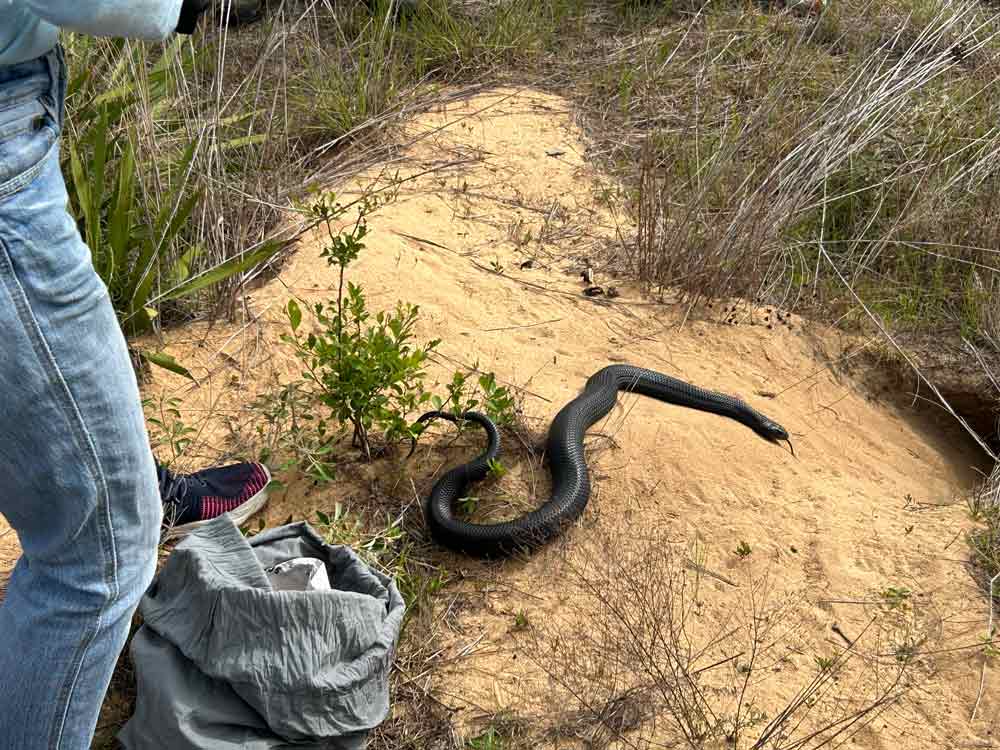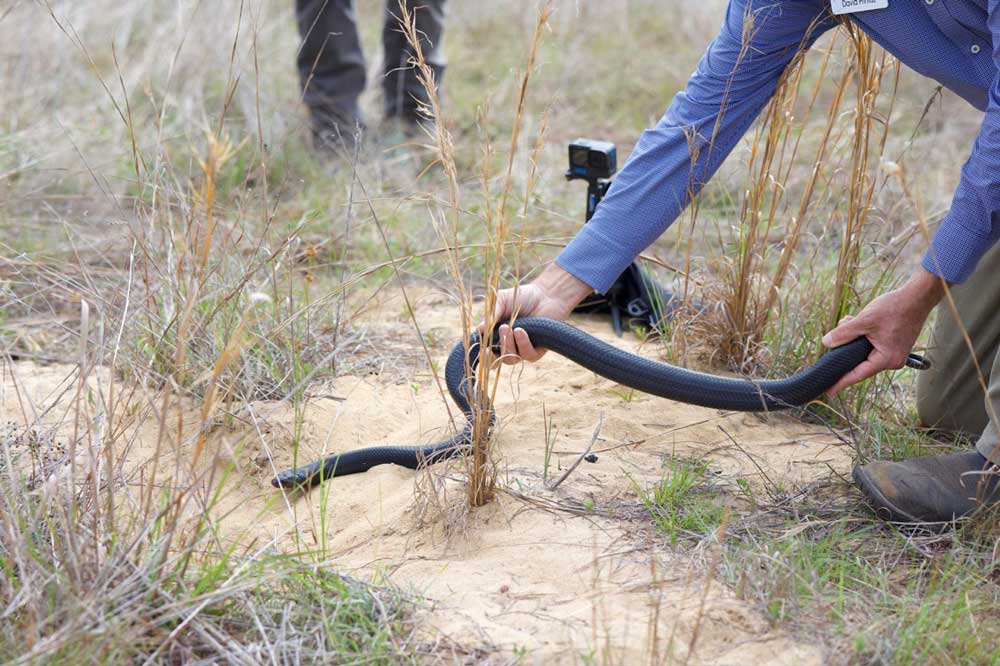The eastern Indigo snakes hatched in 2021. The 10 males and nine females were raised for a year at the Orianne Center for Indigo Conservation (OCIC).
Nineteen captive-bred Eastern Indigo snakes (Drymarchon couperi) were released this week at the Apalachicola Bluffs and Ravines Preserve in Bristol, FL, marking the number of snakes released into the preserve at 126 since recovery efforts for the species began in 2017.

A two year old captive bred Eastern indigo snake released into the wild. Photo by The Nature Conservancy/Sara Withrow
The release is a result of a long term effort by The Nature Conservancy (TNC), the Central Florida Zoo & Botanical Gardens’ Orianne Center for Indigo Conservation (OCIC), the Florida Fish and Wildlife Conservation Commission (FWC), U.S. Fish and Wildlife Service (FWS), Welaka National Fish Hatchery, The Orianne Society, Joseph W. Jones Ecological Research Center, Southern Company through the National Fish and Wildlife Foundation (NFWF), and the Fish & Wildlife Foundation of Florida.
The eastern Indigo snakes hatched in 2021. The 10 males and nine females were raised for a year at the Orianne Center for Indigo Conservation (OCIC). They were then moved to the Welaka National Fish Hatchery, where they spent another year growing before they were released into the 6,430-acre nature preserve in northern Florida’s Liberty County.
The preserve is currently the only site in the state that is designated for the introduction of this apex predator, which is also the longest native snake in the United States. The snakes are outfitted with PIT tags that will enable veterinary staff with the Central Florida Zoo & Botanical Gardens to monitor them in their natural habitat.
Breeding the Eastern Indigo Snake
Eastern Indigo Snake Found In Alabama Wild For Second Time In 60 Years
“It is bittersweet to see these young indigos released into the wild. So much effort is placed into caring for these snakes, from incubating the eggs through their first two years of care, that it is sad to see them go,” Dr. James Bogan, director, Orianne Center for Indigo Conservation said in a statement released to the media. “It is such a good feeling, however, to see these majestic snakes in their natural environment, claiming their role as an apex predator of the longleaf pine ecosystem,” he said.
Eastern Indigo Snake Information
The Eastern indigo snake is the longest native snake in the United States, sometimes reaching more than 8 feet in length. The snake is a federally threatened species and certain restrictions are in place with regard to possessing them. A member of the Colubridae family, indigo snakes feed on a variety of animals, including small mammals, amphibians, birds, lizards, baby turtles, and other snakes, including every species of venomous snake found in Florida.
The snake was historically found in southern Georgia, Alabama, eastern Mississippi and throughout much of Florida, but was largely extirpated from the ABRP due to habitat loss and fragmentation. The last sighting of an Eastern indigo in the ABRP prior to these latest release efforts occurred in 1982. The Apalachicola Bluffs and Ravines Preserve is the only area designated by the state for the introduction of the indigo snake. In 2022, a wild-hatched Eastern indigo snake was found in Alabama’s Conecuh National Forest, marking the second time in 60 years that a wild specimen was observed in the wild.


